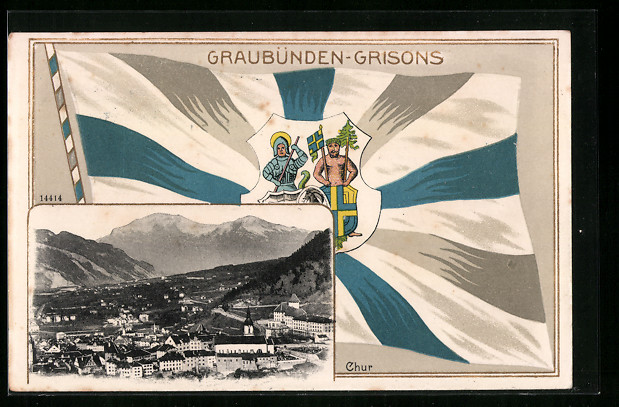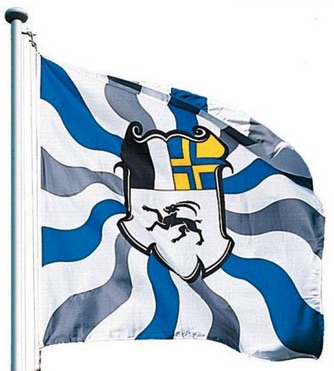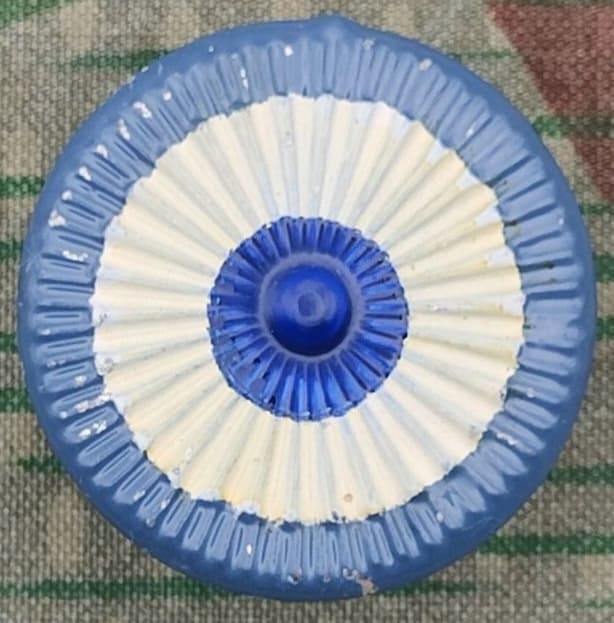Flaggen, Knatterfahnen and Livery Colours
![[Knatterfahnen]](../images/c/ch-gr_kf.gif)

Last modified: 2025-09-20 by martin karner
Keywords: switzerland | graubuenden | grischun | grigioni | german | romansh | italian |
Links: FOTW homepage |
search |
disclaimer and copyright |
write us |
mirrors
![[Flag of Graubünden]](../images/c/ch-gr.gif) image by António Martins
image by António Martins
Description of the Flag
Per fess the chief per pale; 1: per pale sable and argent; 2:
quarterly azure and or, debruised by a cross quartered and
counterchanged; in base: argent, an ibex saillant sable.
Horizontally divided into equal parts, the upper part of which
is also divided into equal parts vertically. The upper part closest
to the hoist is divided vertically into black and white halves. The
upper part in the fly is quartered blue and yellow, divided by a
cross which is itself quartered with the blue and yellow reversed.
The base is white with a black ibex standing upright.
T.F. Mills, 2 November 1997
Symbolism of the Flag
The flag consists of three separate simplified arms representing the
three constituent members of a confederation formed in 1457: the
first quarter is the "Grey League", its black and white being a pun
on the name; the second quarter is the cross of the "League of Ten
Jurisdictions"; and the ibex, denoting freedom, independence,
swiftness and bravery, is the emblem of the "League of God's House".
T.F. Mills, 2 November 1997
History of the Flag
The "League of God's House" (Gotteshausbund) was formed at Chur in
1367 to counter the machinations of Bishop Peter von Boehmen, and
evolved into a revolutionary organisation against Austria. The
"Grey League" (Oberer Bund) was formed in 1424 at Truns as a union
against the "Black League" of the local nobility. The "League of
the Ten Jurisdictions" (Zehngerichte-Bund) was formed in 1436 at
Davos to prevent a splintering of local courts of justice.
Each one of the three Leagues became an allies of the Swiss Confederation from 1497 on. The three leagues
united in 1524 into a republic called the "Free State of the Three Leagues" (Freistaat der Drei Bünde).
This republic never had its own flag or arms, and
its three members went into battle with their own flags. It
became a full member of the Helvetic Republic in 1798 at the
invitation of the French, and a member of the restored Swiss
Confederation in 1803. The Grey League lent its name to the new
Canton (Graubünden in German, Grisons in French), but the original
arms and flag omitted its black and white device, and consisted only
of the "Ten Jurisdictions" in the upper half and "God's House" in the
lower half.
The present design dates from 1932, and the three parts are actually
a simplification of the member's original arms (since 1803, here
the official version from 1861–1931). The black and white arms of the "Grey League" also
featured St. George and the Dragon, and the blue and yellow of the "Ten Jurisdictions" featured a
"savage" (Wilder Mann) crowned with oak leaves and holding in his right hand a
blue and yellow flag, and in his left an uprooted pine tree.
T.F. Mills, 2 November 1997
– Book illustration from 1513 showing the Battle of Calven/Chalavaina (1499). On the
right side the flags of the Grey League and the League of God's House, on the left the flags of the
Swabian League under Maximilian I (source).
– Seal of the League of the Ten Jurisdictions (1518) with CoA,
and the emblems of the three leagues together on a
cannon (1533) (source).
– CoA of the Three Leagues (1717) on the Upper Gate (Obertor/Porta sura, built in 1513)
of Ilanz/Glion (source).
– Shield of cantonal postal service, with cantonal emblem (1803–1932), containing the shields of
the Three Leagues. This postal shield was in use from 1813 to 1848 (Since 1848 the postal service
has been organized nationally) (source).
![[Colour Flag GR]](../images/c/ch-gr_56.gif) image
by Ole Andersen
image
by Ole Andersen
Simple rectangular cantonal flag, as shown in Kannik (1956) [So-called
colour flag (Farbenfahne in German)].
Ole Andersen, 4 August 2002
See also: STATE COLOURS in Dictionary of Vexillology
Flaggen, Knatterfahnen and Livery Colours |
![[Knatterfahnen]](../images/c/ch-gr_kf.gif)
|
Flaggen are vertically hoisted from a crossbar in the manner of gonfanon, in ratio of about 2:9, with a swallowtail that indents about 2 units. The chief, or hoist (square part) usually incorporates the design from the coat of arms – not from the flag. The fly part is always divided lengthwise, usually in a bicolour, triband or tricolour pattern (except Schwyz which is monocolour, and Glarus which has four stripes of unequal width). The colours chosen for the fly end are usually the main colours of the coat of arms, but the choice is not always straight forward.
Knatterfahnen are similar to Flaggen, but hoisted from the long side and have no swallow tail. They normally show the national, cantonal or communal flag in their chiefs [photo, source].
Željko Heimer, 16 July 2000
See also: HANGING FLAG, VERTICALLY HOISTED FLAG, LIVERY COLOURS in Dictionary of Vexillology

 images located by Martin Karner
images located by Martin KarnerAt the beginning of the 20th century, flamed flags were still in use, with the white cross replaced by
a (baroque) shield in the centre of the flag. These decorative flags had been used until WWII and then
somewhat forgotten in preference of the current cantonal flags. [Today they are being
produced again, see right image]
Pascal Gross, 30 June 2002
See also:
logo.jpg) image located by Martin Karner (8 May 2024)
image located by Martin Karner (8 May 2024) image located by Martin Karner
image located by Martin KarnerCockade for the cantonal troops' headgear (regulation from 1898, size: ca. 35 mm, reverse side).
Martin Karner, 14 March 2025
See also: Cockades (Swiss Army)